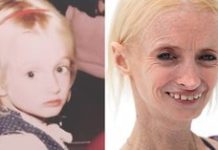Different patients respond differently to different types of treatments, which is completely normal. But it sucks putting time, money, and effort into a treatment that may or may not do the job—especially if you’re trying to keep your cancer from spreading or recurring.
Most breast tumors have a high level of estrogen receptors, making them respond positively to anti-estrogen treatment. However, a small portion of women who undergo anti-estrogen treatment after breast cancer surgeries will find that their cancer gets worse or relapses with treatment. This is often due to mutations in the estrogen receptor gene that inhibit the activity of the medication.
Until recently, there was no way to tell whether a patient would get better or worse on this type of medication, leaving doctors and patients blindly guessing at their treatment plans.

Article continues below
Our Featured Programs
See how we’re making a difference for People, Pets, and the Planet and how you can get involved!
Luckily, researchers believe they’ve found a way to determine whether these hormone treatments will work for an individual patient based on whether or not they have certain mutations in the estrogen receptor gene.
“We investigated whether the resistance mutations, which occurred before cancer treatment, affected the patients’ survival and saw that patients with a mutation in their primary tumor had three times higher risk of recurrence and 2.5 times higher risk of dying,” says doctoral student Malin Dahlgren. “The link between the mutations and poor survival was also seen after statistical corrections for age or for other factors that may affect the outcome for the patient.”
The study, conducted at Lund University and published in JNCI Cancer Spectrum, is the largest of its kind on resistance mutations in the estrogen receptor in primary breast cancer. It focused on the mutations in the estrogen receptor ESR1 gene, which is common in relapsed breast cancer in women who had received prior anti-estrogen cancer treatment.

“If our results are confirmed in further studies, it would be relevant to screen for these resistance mutations already at diagnosis, and then consider other treatment options that could work better for patients with mutated tumors,” says Lao Saal, who led the study.
The researchers analyzed RNA-sequencing data from more than 3,000 untreated breast tumors from patients who participated in the large SCAN-B research project. 2,720 tumors were positive for estrogen receptors and therefore eligible for hormone treatment, while 29 tumors had an ESR1 resistance mutation. Resistance mutations were only found in patients over the age of 50.
Researchers noted that these mutations made the tumors resistant to hormonal treatments. Luckily, however, the chance of having a resistance mutation is very low in a patient who has only been diagnosed with cancer once.

“This not only confirms what previous studies have shown, that the mutations are relatively rare, but we now show that these resistant mutations occur in about 1 percent of breast cancer cases already at initial diagnosis, and we are the first to show that these patients seem to respond less well to hormonal treatment. If the results can be verified in further studies, it may be relevant to consider other treatment options for these patients,” concludes Lao Saal.
If these results are corroborated in further studies, then testing for resistance mutations could become commonplace and could save certain breast cancer patients time and money on cancer treatments that aren’t likely to work well for them.
![]()
Provide Mammograms
Support those fighting Breast Cancer at The Breast Cancer Site for free! →
Whizzco Source






